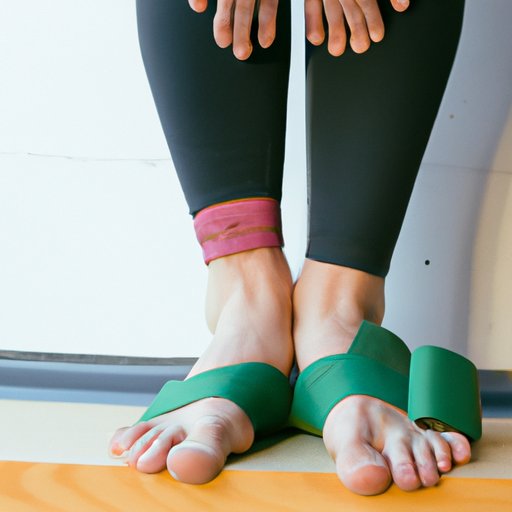Introduction
Balance is a skill that is essential for everyday life. It involves the ability to control and coordinate your body’s movement while standing or moving. Poor balance can be caused by a variety of factors, such as muscle weakness, injury, age, and medical conditions. Improving your balance can help you perform daily activities more easily and reduce your risk of falls.
Strengthen Your Core Muscles
Having strong core muscles is essential for maintaining good balance. The core muscles are the muscles of the abdomen and lower back, which work together to provide stability and support for the body. Strengthening these muscles can help you maintain better posture, move more efficiently, and reduce fatigue.
Benefits of a strong core include improved balance, coordination, and stability; increased strength and power; improved posture; and reduced risk of injury. To strengthen your core muscles, focus on exercises that target the abdominal and lower back muscles, such as planks, crunches, bridges, and supermans.
Do Balance Exercises Regularly
Regular balance exercises can help you improve your balance and coordination. These exercises can also help you become more aware of your body’s position in space, which is known as proprioception. Examples of balance exercises include single-leg stands, heel-to-toe walking, and side-stepping.
Benefits of regular balance exercises include improved balance and coordination, increased muscle strength and endurance, and improved reaction time. To get the most out of your balance exercises, aim to do them at least three times a week on non-consecutive days.
Improve Your Proprioception
Proprioception is the ability to sense the position of your body in space. Improving your proprioception can help you move more efficiently and accurately, which can improve your balance. To improve your proprioception, focus on exercises that involve balance, coordination, and sensory awareness, such as throwing and catching a ball, balancing on one foot, and jumping over obstacles.
Exercises to improve proprioception include standing on one leg with eyes closed, juggling, and walking on a balance beam. Aim to do these exercises two to three times per week to see the best results.
Stretch and Mobilize Your Joints
Stretching and mobilizing your joints can help improve your balance and coordination. Stretching helps to increase flexibility, which can make it easier to move your body in different directions. Mobilizing your joints helps to increase range of motion, which can improve your overall balance.
Benefits of stretching and mobilizing joints include improved balance and coordination, increased flexibility, and improved joint health. To stretch and mobilize your joints, focus on exercises that target the major joints of the body, such as the hips, shoulders, and ankles. Examples of stretches and joint mobility exercises include hip circles, shoulder rolls, and ankle rotations.
Try Yoga or Pilates
Yoga and Pilates are great ways to improve your balance. Both forms of exercise focus on improving body control, coordination, and posture, which can help improve balance. Additionally, both forms of exercise involve stretching and strengthening the body, which can further improve balance.
Benefits of yoga and Pilates for improving balance include improved body awareness, increased muscle strength and flexibility, and improved coordination. To get the most out of your practice, focus on poses that require balance, such as tree pose, warrior III, and half moon.

Wear the Right Shoes for Your Activities
The type of shoes you wear can have a big impact on your balance. Wearing the wrong shoes can make it difficult to maintain balance, especially when performing activities that require agility and quick movements. Therefore, it is important to wear shoes that are appropriate for the activity you are doing.
Benefits of wearing the appropriate shoes include improved balance, increased stability, and reduced risk of injury. When choosing shoes, look for ones that offer good arch support, cushioning, and traction. Additionally, make sure the shoes fit properly and are comfortable.
Conclusion
Improving your balance is a great way to make everyday activities easier and reduce your risk of falls. To improve your balance, focus on strengthening your core muscles, doing balance exercises regularly, improving your proprioception, stretching and mobilizing your joints, trying yoga or Pilates, and wearing the right shoes for your activities.
(Note: Is this article not meeting your expectations? Do you have knowledge or insights to share? Unlock new opportunities and expand your reach by joining our authors team. Click Registration to join us and share your expertise with our readers.)
